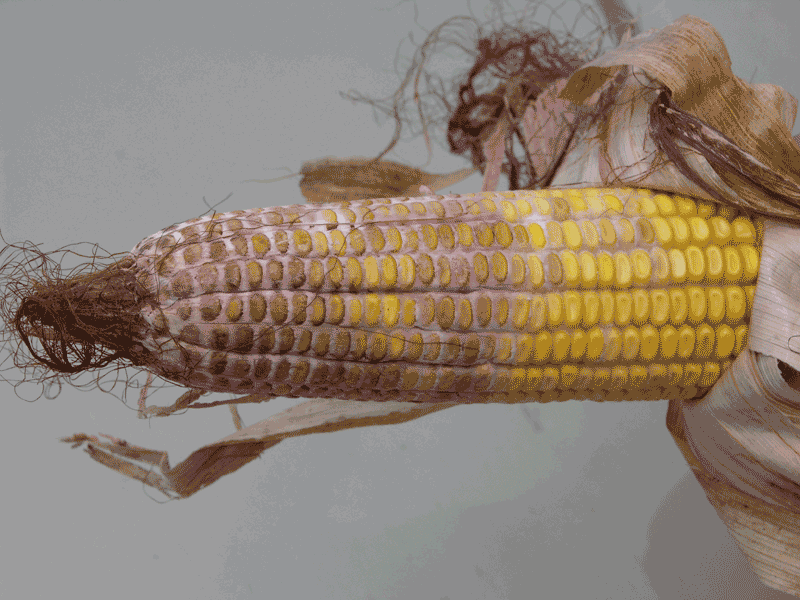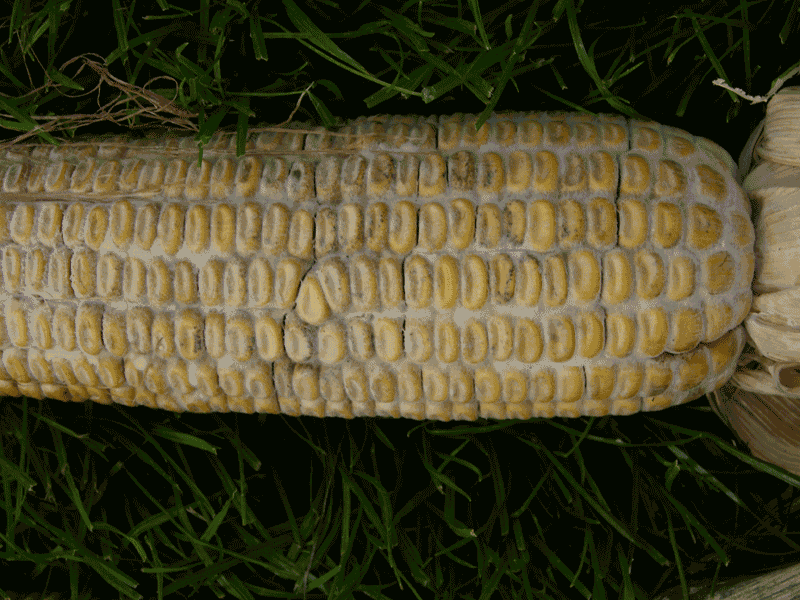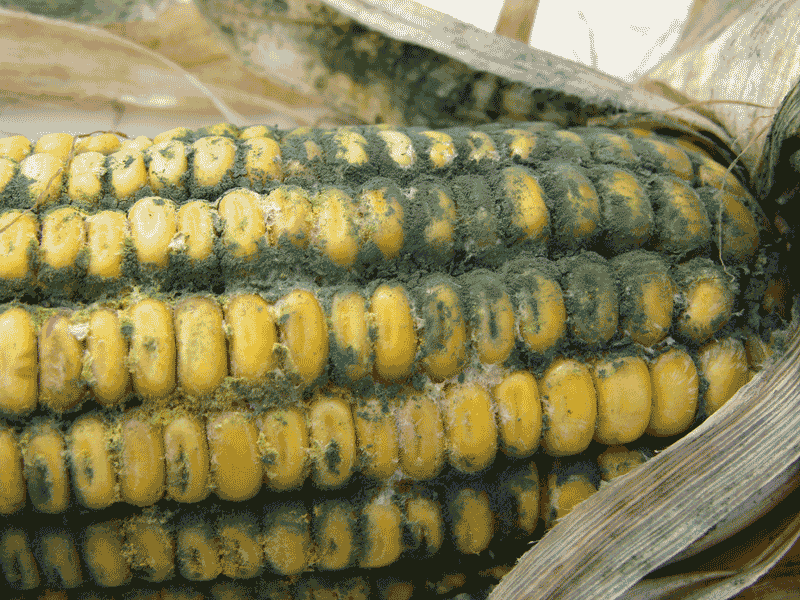Cropside: Corn ear moulds ID “101”
AGRONOMIC INFORMATION FROM ONTARIO'S CROP SPECIALISTS

SMALL TO ALMOST non-detectable levels of mould in the field can lead to significant mould problems if they go undetected and are allowed to develop in storage; therefore proper ear mould identification is critical. These fungi not only reduce yield but produce mycotoxins, hence impacting feed value, marketability and livestock health.
Gibberella Ear Rot
Gibberella ear rot is the most common and important ear mould in Ontario. Infection often begins at the ear tip and moves down towards the ear base. In severe cases, the ear husk and cob fuse – resulting in mummified ears. Although the fungus can produce a white-coloured mould which makes it difficult to tell apart from Fusarium Ear Rot, Gibberella produces a characteristic dark red or pink coloured mould. Toxins produced by Gibberella include Deoxynivalenol (vomitoxin or DON), Zearalenone (ZEN) and T-2 toxin. If grain is to be used for feed, a myctoxin test is recommended.

Fusarium Ear and Kernel Rot
Unlike Gibberella, Fusarium infected kernels are often scattered around the cob or on kernels that have been damaged (for example by insects or bird feeding). Fusarium infection produces a white to pink or salmon-coloured mould which in most cases does not fuse the husk to the ear, unlike Gibberella. A “white streaking” or “star-bursting” can be seen on the infected kernel surface. Although many Fusarium species may be responsible for these symptoms, the primary species we are concerned about in Ontario is Fusarium verticillioides which produces the toxin Fumonisin which is a human carcinogen.

Diplodia Ear Rot
The characteristic ear symptom of Stenocarpella maydis infection is a white mould that begins at the base of the ear and may eventually cover the entire ear. Mould growth can also occur on the outer husk which has small black bumps (pycnidia) embedded in the mould. These reproductive structures are where new spores are produced. Unlike Gibberella and Fusarium, Diplodia does not produce any significant toxins.

Penicillium Ear Rot
A Penicillium ear rot infection produces a light blue-green powdery mould which often grows on or between the kernel surface but can lead to internal discolouration of the embryo (blue-eye mould). Infected kernels could become bleached or streaked. It can be a serious problem if corn is stored at high moisture levels (greater than 18%). Ochratoxins are produced by many Penicillium species. Alternaria and Cladosporium produce a black mould on the ear and kernel surface. They are a problem when harvest conditions are delayed, there is injury from insects/birds, or premature crop death from frost occurs. Cladopsorium and Alternaria do not produce any known toxins and if properly stored or ensiled mould growth stops under anaerobic (oxygen-free) conditions. •























